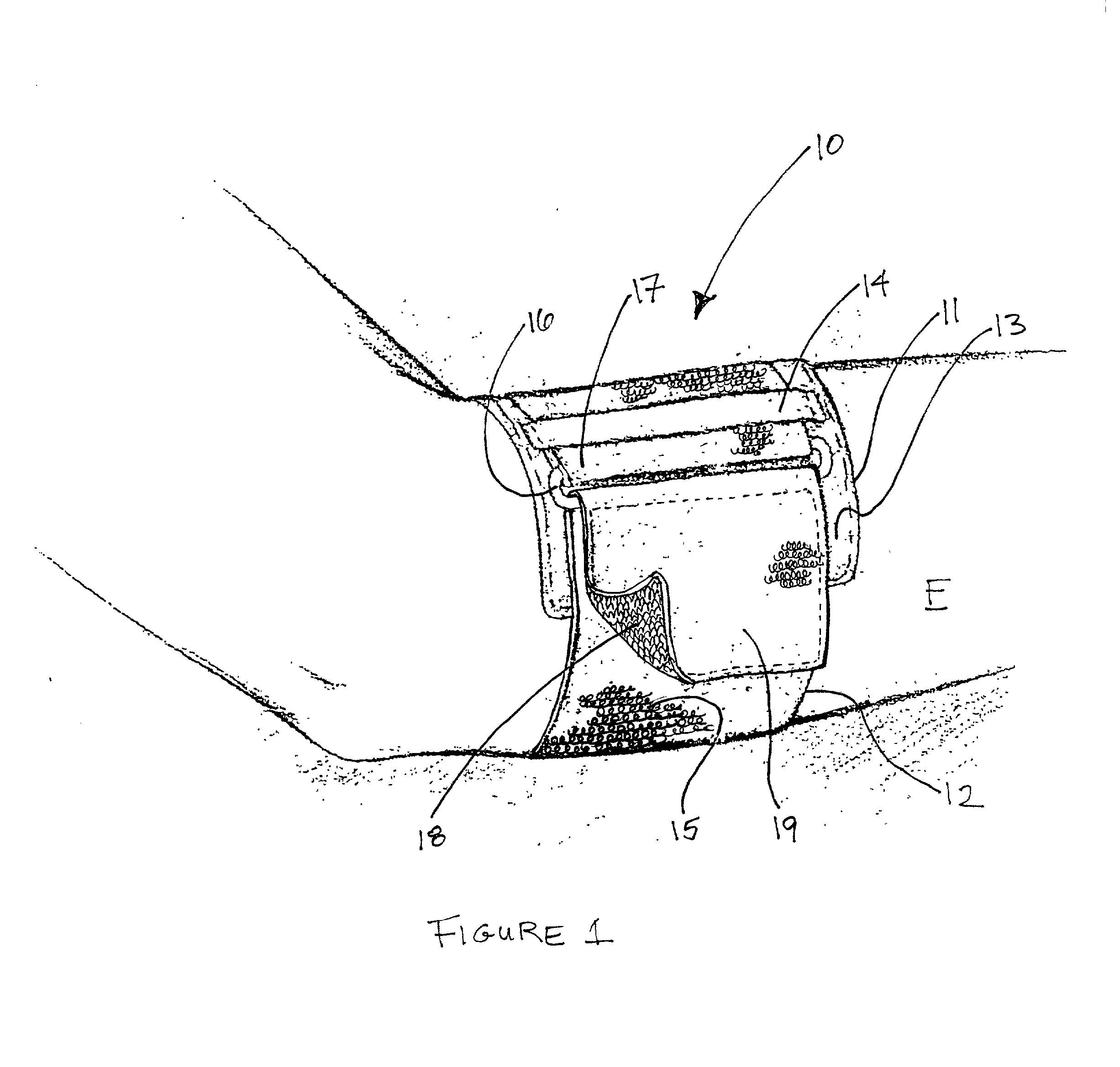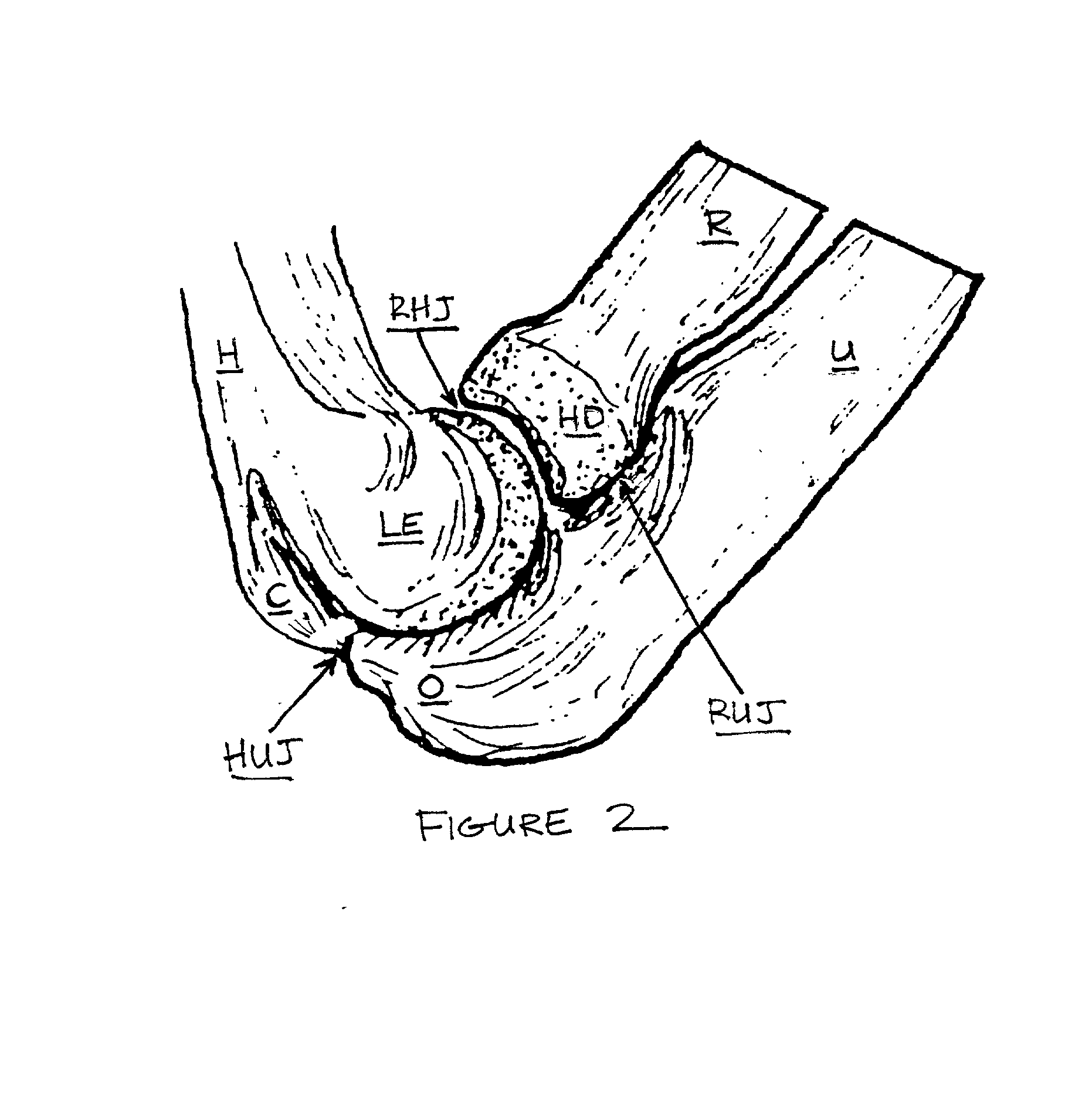Custom molded tennis elbow pad assembly
a tennis elbow and assembly technology, applied in the field of custom molded tennis elbow pads, can solve the problems of overuse, inflammation and tear, prior art treatment methods often fail to provide adequate relief, and prior art straps do not provide concentrated support directly over the injured area, etc., and achieve the effect of convenient fabrication
- Summary
- Abstract
- Description
- Claims
- Application Information
AI Technical Summary
Benefits of technology
Problems solved by technology
Method used
Image
Examples
Embodiment Construction
[0044] Referring now specifically to the drawings, a tennis elbow pad assembly is illustrated in FIG. 1 and shown generally at reference numeral 10. The assembly 10 includes a pad 11 which, as is described in detail below, is custom-fitted to a wearer's forearm "F", and is held in place by an elongate strap 12. The pad 11 has an upper surface 13 to which the ends of a relatively narrow strap loop 14 are sewn. The loop 14 extends across the pad 11 and maintains the strap 12 in place around the forearm "F". The strap 12 is preferably formed of a narrow length of woven or knitted material having surfaces formed from a loose fibrous covering 15. A D-ring 16 is secured to a first end 17 of the strap 12, and a first patch of hook material 18 is sewn, glued, or otherwise connected to a second end 19. The strap 12 is formed into a loop around the forearm "F" by passing the strap 12 through the D-ring 16. The pad 11 is then secured against the forearm "F" by pulling the strap 12 so that the ...
PUM
 Login to View More
Login to View More Abstract
Description
Claims
Application Information
 Login to View More
Login to View More - R&D
- Intellectual Property
- Life Sciences
- Materials
- Tech Scout
- Unparalleled Data Quality
- Higher Quality Content
- 60% Fewer Hallucinations
Browse by: Latest US Patents, China's latest patents, Technical Efficacy Thesaurus, Application Domain, Technology Topic, Popular Technical Reports.
© 2025 PatSnap. All rights reserved.Legal|Privacy policy|Modern Slavery Act Transparency Statement|Sitemap|About US| Contact US: help@patsnap.com



